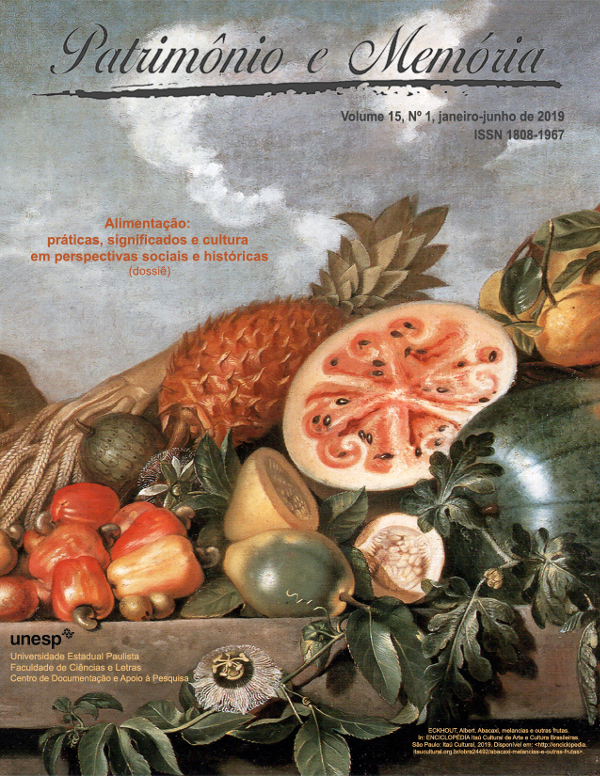Patrimônio mundial e comunidade local
opiniões confrontadas sobre Atapuerca, Burgos (Espanha)
DOI:
https://doi.org/10.5016/pem.v15i1.3253Palavras-chave:
Atapuerca, Patrimônio Mundial, Comunidade local, Visões encontradas, Gestão culturalResumo
Neste trabalho são apresentadas as opiniões confrontadas dos habitantes de duas localidades adjacentes ao sítio arqueológico do Patrimônio Mundial “Sierra de Atapuerca”. Os resultados mostraram diferenças entre os habitantes das duas cidades sobre as vantagens e desvantagens da declaração da UNESCO, a gestão realizada pela administração regional e uma avaliação diferente dos benefícios do turismo. Devido ao diferente perfil social de ambas as populações, este estudo mostra, pela primeira vez, que políticas devem ser aplicadas para satisfazer as diversas sensibilidades e envolver os habitantes na construção de seu patrimônio e na gestão de seu futuro. Em Atapuerca, a socialização e a democratização do patrimônio não devem ignorar a opinião dos moradores do patrimônio.
Referências
ATALAY, Sonya. Community-based archaeology: research with, by, and for indigenous and local communities. California: University of California Press, 2012.
AVRAMI, Erica; MASON, Randall; DE LA TORRE, MARTA (Ed.). Values and heritage conservation: research report. Los Angeles: The Getty Conservation Institute, 2000.
BYRD, Erick. Stakeholders in sustainable tourism development and their roles: applying stakeholder theory to sustainable tourism development. Tourism Review, Reino Unido, v. 2, n. 62, p. 6-13, 2007.
CASTILLO, Alicia. Introduction: lights and shadows on the interpretation of Cultural Heritage through community-engaged participation. Complutum, España, v. 2, n. 27, p. 253-258, 2016.
CASTILLO, Alicia (Ed.). Proceedings of the First International Conference on best practices in World Heritage: archeology. Menorca, Balearic Island. Spain. Madrid: Universidad Complutense de Madrid, 2012.
______ . Proceedings of the Second International Conference on best practices in World Heritage: people and communities. Menorca, Balearic Island. Spain. Madrid: Universidad Complutense de Madrid, 2015.
COHEN, Louis; MANION, Lawrence; Morrison, Keith. Research methods in education. London; New York: Routledge, 2007.
CONFORTI, María Eugenia; DÍEZ FERNÁNDEZ-LOMANA, Carlos; MARIANO, Mercedes; ENDERE, María Luz; ROMERO ALONSO, Antonio. World Heritage and the Local Community: the case of Atapuerca (Burgos, Spain). Conservation and management of archeological sites, v. 17, n. 4, p. 327-339, 2015.
CROOKE, Elizabeth. The politics of community heritage: motivations, authority and control. International Journal of Heritage Studies, Reino Unido, v. 1-2, n. 16, p. 16–29, 2010.
JUNTA DE CASTILLA Y LEÓN. Decreto 39/2009, creación del Sistema Atapuerca Cultura de la Evolución y el Museo de la Evolución Humana. Boletín Oficial de Castilla y León. España, n. 113, p. 18312-18316, 2009.
FREUD, Sigmund. Os chistes e sua relação com o inconsciente. Rio de Janeiro: Imago, 1974.
DÍEZ, Carlos; NAVAZO, Marta; ALONSO, Rodrigo, PÉREZ, Miguel, LABARGA, Alberto. Illustrated guide to Atapuerca. Burgos: University of Burgos, 2014.
DÍEZ, Carlos; MORAL, Sandra; NAVAZO, Marta. La Sierra de Atapuerca: un viaje a nuestros orígenes. León: Everest, 2009.
GARCÍA CANCLINI, Néstor. Los usos sociales del patrimonio cultural. In: AGUILAR, M. Patrimonio etnológico, nuevas perspectivas de estudio. Seville: Junta de Andalucía, 1999, p. 16-33.
GONZÁLEZ MÉNDEZ, Matilde. La revalorización del patrimonio arqueológico: la definición de un programa para el ayuntamiento de Toques (A. Coruña). España: Xunta de Galicia, 2000.
HALL, Michael; MCARTHUR, Simon. Heritage management in New Zealand and Australia. The Human Dimension. Oxford: Oxford University Press, 1996.
ICOMOS. ICOMOS para interpretación y presentación de sitios de patrimonio cultural. Québec, 2008.
______ . Carta internacional para la gestión del patrimonio arqueológico. Lausana, 1990.
______ . Carta internacional sobre turismo cultural. La gestión del turismo en los sitios con Patrimonio Significativo. México, 1999.
JAAFAR, Mastura; DAHALAN, Norziani; MOHD, Siti. Local community entrepreneurship: a case study of the Lenggong Valley. Asian Social Science, Canadá, v. 10, n. 10, p. 226-235, 2014.
______ ; MD NOOR, Shuhaida; RASOOLIMANESH, Mostafa. Perception of young local residents toward sustainable conservation programmes: a case study of the Lenggong World Cultural Heritage site. Tourism Management, Reino Unido, n. 48, p. 154-163, 2015.
LARSEN, Knut Einar (Ed.). Nara Conference on Authenticity. Nara, Japan, 1-6 november, 1994. Tokio: UNESCO, Agency for Cultural Affairs (Japan), ICCROM, ICOMOS. Agency for Cultural Affairs, 1995.
MARQUIS-KYLE, Peter; WALKER, Meredith. The illustrated Burra Charter: making good decisions about the care of important places. Australia ICOMOS. Brisbane: Australia Heritage Commission, 1996.
NICHOLAS, Lorraine; THAPA, Brijes; KO, Yong. Residents’ perspectives of a World Heritage site: the pitons management area, St. Lucia. Annals of Tourism Research, USA, v. 3, n. 36, p. 390-412, 2009.
OPPENHEIM, Alan. Questionnaire design, interviewing and attitude measurement. London: Pinter, 1998.
ROTMAN, Mónica. Procesos patrimoniales: redefiniciones, dinámica y tensiones en la contemporaneidad. Que Haceres, Argentina, n. 2, p. 11-26, 2015.
SMITH, Laurajane; WATERTON, Emma. Heritage, archaeology and communities. London: Duckworth, 2009.
UNESCO. Expert meeting on the “Global strategy” and thematic studies for a representative world heritage list. In World Heritage Committee, Eighteenth session (12 e 17 November, 1994). Paris: UNESCO, 1994.
______ . El mensajero del patrimonio cultural inmaterial. Cusco: UNESCO, 2006.
______ . Operational guidelines for the implementation of the World Heritage convention. Paris: UNESCO World Heritage Centre, 2008.
WATERTON, Emma. Heritage and Community Engagement. In: SCHOFIELD, I. The ethics of Cultural Heritage, ethical archaeologies: the politics of social justice. New York: Springer, 2015, p. 53-68.
______ . Politics, policy and the discourses of heritage in Britain. London: Palgrave Macmillan, 2010.
______ ; WATSON, Steve (Ed.). Heritage and community engagement: collaboration or contestation? London; New York: Routledge, 2011.
WATSON, Steve; WATERTON, Emma Editorial: Heritage and community engagement. International Journal of Heritage Studies, Reino Unido, v. 1-2, n. 16, p. 1-3, 2010.
WORLD TOURISM ORGANIZATION. Sustainable tourism development: guide for local planners. Madrid: World Tourism Organization, 1993.
Downloads
Publicado
Como Citar
Edição
Seção
Licença
Copyright (c) 2019 María Eugenia Conforti, Mercedes Mariano, Juan Carlos Díez Fernández-Lomana, María Luz Endere

Este trabalho está licenciado sob uma licença Creative Commons Attribution 4.0 International License.
Todo o conteúdo do periódico, exceto onde está identificado, está licenciado sob uma Licença Creative Commons do tipo atribuição BY.


